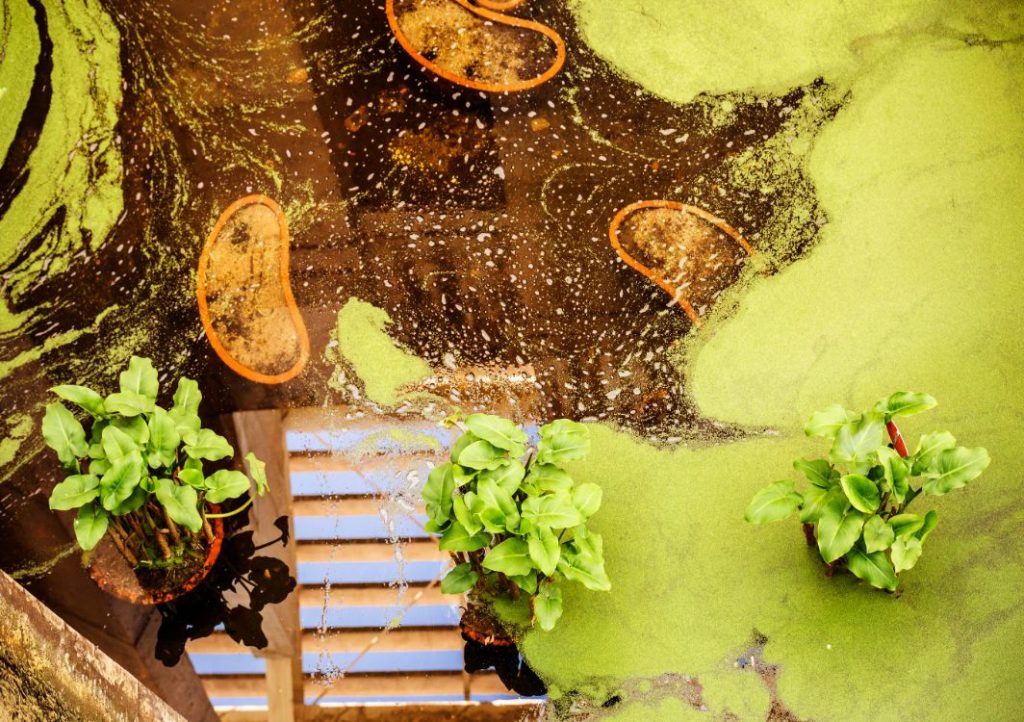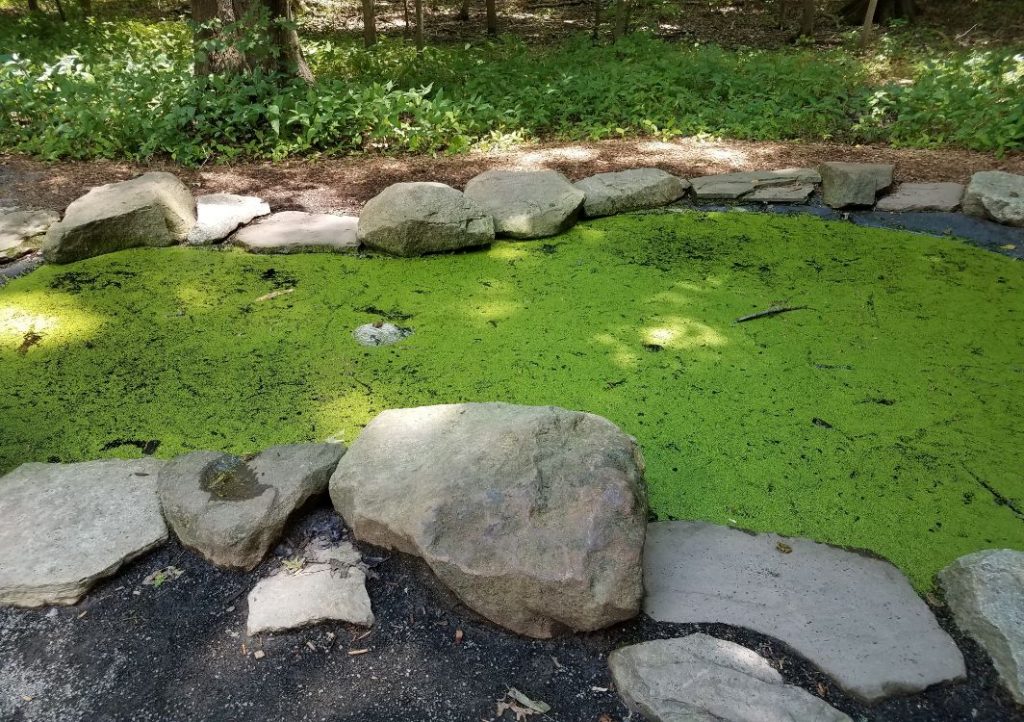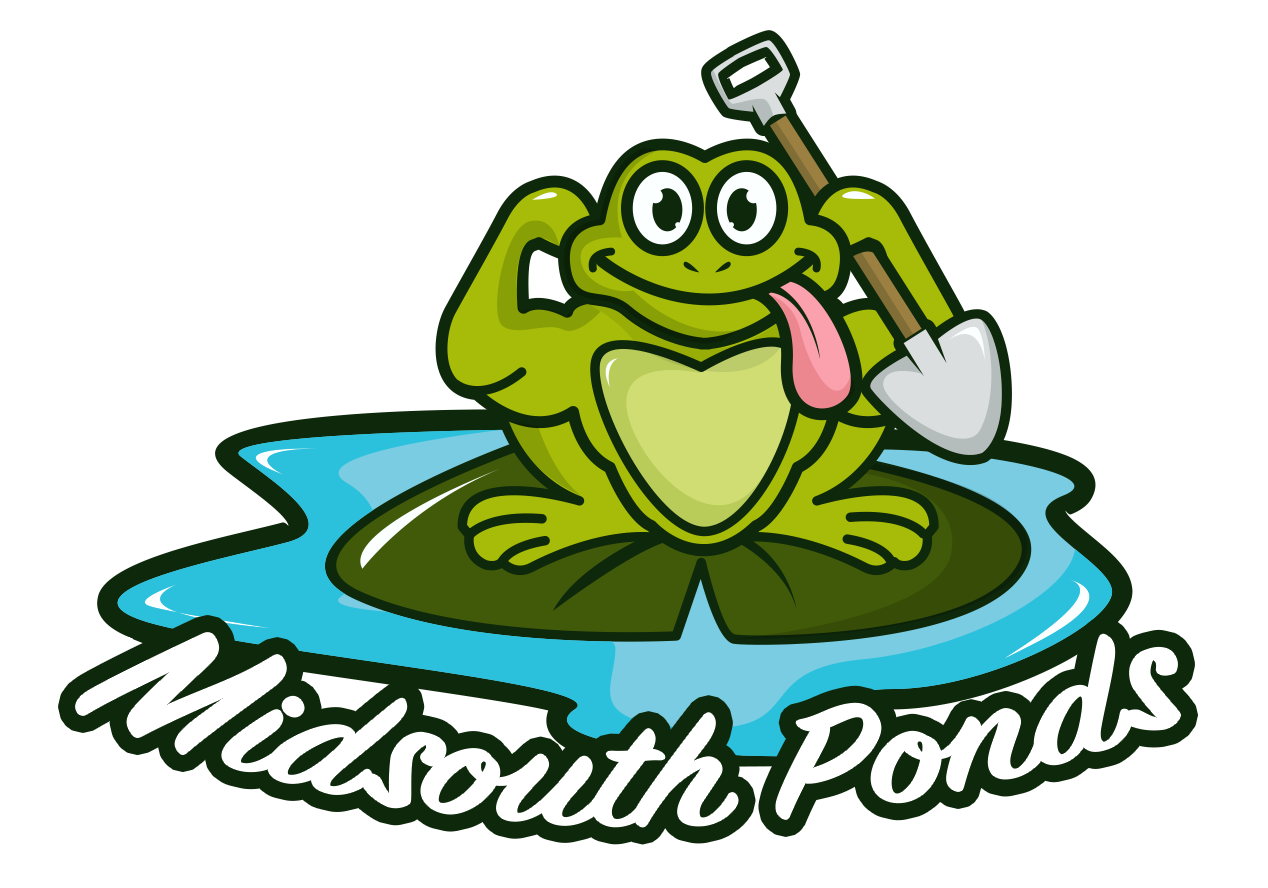At Midsouth Ponds, we specialize in all aspects of pond construction and repair. Once we install your pond, we provide ongoing maintenance to make sure that it stays in a pristine state. There are some maintenance steps you can do to keep your pond clean. We can also help you learn how to get rid of algae in a pond.
What Is Algae?
You will need to maintain balance with the outdoor ecology of your yard when installing a pond and keeping it in the best condition. This means that your pond will need to share space with some forms of indigenous wild and plant life, which can include various types of algae.
Algae is a ubiquitous form of plant life that commonly grows in various types of waterways. For example, in ponds, many types of algae tend to grow near the bottom and then rise to the surface as they develop. The main types of algae you are likely to encounter in your yard include filamentous algae and planktonic.
Planktonic
Planktonic algae are single-celled and often float freely in the ponds, lakes, and rivers that they inhabit. Planktonic algae blooms can give a pond a greenish color. Since they are often the base of a food chain in a body of water, ecologists consider planktonic algae to be beneficial in many situations.
Since it tends to grow near the water’s surface, where the sunlight penetrates most deeply, planktonic algae blooms can shade the bottom of the pond from sunlight. Although this may be beneficial in some ways, it can also prevent plant life on the bottom from gaining adequate sunlight. As beneficial as planktonic algae can be, too much of anything can be detrimental.
Too much planktonic algae in a pond can seriously deplete dissolved oxygen levels. As a result, this can cause the fish in your pond to die off. Thus, for many, it’s a good idea to keep the number of planktonic algae in your pond at balanced levels.
Filamentous
Another major type of algae is called filamentous. These are also single-celled creatures, but they come together to form chain-like colonies. These colonies then combine into stringy filaments and float to the surface.
The physical structure of these filamentous algae produces their signature scummy appearance. Although planktonic algae serve as food sources, studies suggest that filamentous algae can provide the same service. Filamentous algae are thus somewhat predatory and can quickly use up oxygen levels in a pond while giving little back.
For this and other reasons, it is a good idea to do your best to prevent and remove filamentous algae blooms.
What Kind of Damage Does Algae Cause?

Although it is beneficial to have some level of algae in your pond, if you have too much, or the wrong type, your water will suffer. For example, some types of algae have no nutritional value for wildlife and reduce the water quality of the ponds in which they grow.
Blue-green algae is a scourge of many ponds and other types of waterways. This type of algae creates cyanotoxins as it grows and matures. These toxins are dangerous to fish, and they can also cause the water in your yard to have a musty odor.
Another example of this type of destructive algae is called Chara. Due to its appearance and odor, Chara has another name: musk grass. This type of algae often grows in thick blooms on the bottom of waterways.
Musk grass isn’t all bad, and it often acts as a food source for wildlife species like ducks. However, an overgrowth of this algae can significantly lower water quality levels when it dies off.
What Are Some Ways to Remove Harmful Algae?

Dealing with harmful algae can seem challenging. However, there are several effective ways to reduce the growth of algae and protect your pond’s water.
Deny Nutrition
One good way to keep destructive algae species out of your pond is to get rid of some of their sources of nutrition. Many types of algae thrive on nitrogen or phosphorus, which are the main ingredients in many types of fertilizers.
Preventing fertilizer runoff from entering your pond is an excellent way to prevent algae growth.
Use Them for Food
If you like having fish in your pond, the good news is that there are certain species that thrive on eating algae. If you introduce these algae-eating species into your pond, they can act as natural cleaners and keep the ecological balance where it should be.
UV Light
Another modern solution to algae problems is called a UV clarifier. These ingenious devices use the power of ultraviolet light to kill algae in the water. With regular use, these UV clarifiers keep your pond clear, healthy, and fresher.
Effective Aeration
Using an aerator is another way to keep certain types of algae at bay. Some types of aerators, including diffusers, do a good job of introducing air into the water. As they do so, some of this oxygen gets to aerobic bacteria.
These bacteria break down biological material from dead plants in the water. As a result, you can promote the growth of bacteria that keep your water clearer by using an aerator.

Now that you know more about how to get rid of algae in a pond, you can take steps to keep your home pond installation in better shape. That said, there are some jobs that are so big or complicated that they require professional attention. At Midsouth ponds, we stand ready to put our skills and experience to work on your behalf.
Whether you want to know more about algae growth or beautiful water lilies for your pond, Midsouth Ponds’ experts are ready to answer your questions. Fill out our contact form today to get a quote!



